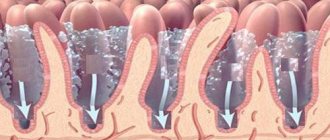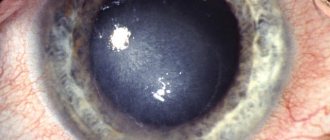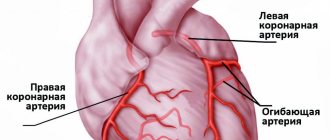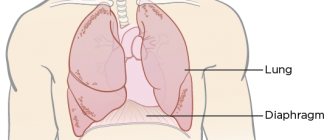Other diseases starting with the letter “U”: Acne, Thyroid nodules and cysts, Ureaplasmosis, Uremia, Urethritis
A condition in which excess metabolic products accumulate in the blood is called uremia. The syndrome occurs when the kidneys are damaged, when the body loses the ability to remove toxic substances formed as a result of vital activity from the body. Under the influence of these substances, damage to healthy cells occurs, disruption of biochemical processes, and a shift in the acid-base balance of the body.
What causes uremia
There are acute and chronic forms of the disease.
The causes of acute uremia include severe trauma, shock, thermal and chemical burns, frostbite, which lead to acute renal failure. In this case, urine partially or completely does not enter the bladder (oliguria or anuria).
Chronic uremia develops gradually against the background of fading of the renal parenchyma. The following diseases lead to this: nephrosclerosis, glomerulonephritis, pyelonephritis, cysts and kidney stones.
Risk factors
The occurrence of this condition is facilitated not only by pathologies of the urinary system. Patients with diabetes, autoimmune diseases and prostate tumors should carefully listen to their body and pay attention to manifestations that may indicate the development of uremia.
Complications
With uremia, the brain suffers greatly. The patient experiences disturbances in attention, sleep, memory, and concentration. Hallucinations may develop. Gradually, the symptoms of uremia become so severe that uremic encephalopathy develops. Its main manifestations:
- complete apathy;
- increased anxiety (the patient is in an excited state);
- sensory disturbance;
- asterixis;
- instability is observed while walking;
- speech is disrupted;
- A characteristic symptom is muscle twitching.
The most severe complication of uremia is uremic coma . It develops if the patient was not provided with qualified medical care in a timely manner (in the first stages of the development of the disease). Its symptoms may develop gradually as the kidney tissue dies. The patient complains of general weakness and loss of appetite. The amount of urine produced decreases, and swelling increases. These symptoms are accompanied by diarrhea and vomiting. Quite often, patients complain of pain in the heart area. Their shortness of breath increases, hemorrhages appear in the skin, mucous membranes and in the brain. One of the main symptoms for diagnosis is a pronounced smell of ammonia from the mouth. If treatment is not carried out in a timely manner, stupor and uremic coma will occur.
This condition requires immediate emergency care. The first thing that needs to be done in case of uremic coma is to remove from the body substances that the kidneys are not able to remove. For this purpose, the intestines are washed and solutions are administered intravenously.
Symptoms and clinical picture of uremia
Symptoms of uremia usually appear gradually and affect all organs. The first signal is the release of a large volume of discolored urine. In the future, its number is reduced. Nitrogenous metabolic substances accumulate in the body and cause azotemia. This condition is precomatous and can last for several months.
Manifestations of uremic coma:
- refusal to eat and increased fluid intake;
- vomiting after eating and on an empty stomach;
- bitterness in the mouth and ammonia odor from the mouth;
- diarrhea with blood streaks;
- weakness, loss of consciousness;
- specific breathing (deep inhalation followed by short exhalation);
- body temperature not higher than 35 °C;
- cachexia, anemia;
- itching and dry skin;
- trophic ulcers;
- specific plaque on the skin (uremic powder).
Symptoms
With uremia, symptoms appear gradually. Over time, they begin to intensify and the person’s condition worsens. This disease can be detected by its early signs:
- the person is lethargic, apathetic and drowsy;
- the skin becomes dry and flabby;
- hair and nails become dry and brittle;
- the face is pale, with a slight yellowish tint. Gradually it becomes puffy;
- A characteristic white coating resembling frost appears on the skin. This is a specific symptom. White crystals on the skin are urea;
- the patient experiences severe itching. If he starts scratching the skin, a purulent infection may develop;
- hemorrhages appear on the body (the reasons for this phenomenon have been little studied);
- bloody diarrhea;
- brain function deteriorates;
- nausea and vomiting appears;
- a characteristic sign is the smell of ammonia from the mouth;
- the patient feels weakness in the muscles of the back, shoulders and pelvis.
Soon the patient completely loses his appetite and stops taking any food. As a result, hallucinations, convulsions and coma occur.
People with uremia feel drowsy
Diagnosis of uremia
Diagnosis of uremia is carried out based primarily on anamnestic data and the symptomatic picture. To confirm the primary diagnosis, laboratory tests for uremia are prescribed.
Diagnostic methods
The main diagnostic study is a biochemical blood test, which determines the level of metabolic products in the body (nitrogen, urea, uric acid and creatinine). If these indicators increase, we can talk about uremia.
In case of chronic poisoning of the body, a urine test is also informative. Uremia is indicated by low urea and pigment content and low specific gravity of urine.
Prevention
In order to prevent the development of uremia, it is necessary, first of all, to avoid the causes that provoke its occurrence. It is important to monitor the general condition of the body and the condition of the kidneys, and prevent them from hypothermia. It is recommended to undergo examination every six months.
In order for the kidneys to perform their functions normally, it is necessary to eat properly. The most important rule is to drink plenty of fluids. Drinks should only be healthy. Give preference to non-carbonated mineral waters, juices, green tea, and herbal infusions.
Treatment regimen for uremia
Since uremia is a consequence of other diseases, treatment is mainly etiological and symptomatic (in the presence of complications).
Basic treatment methods and contraindications
The most effective treatments for uremia are hemodialysis and kidney transplantation.
Hemodialysis is used regardless of the severity of the condition and the course of the pathology. It is carried out using an “artificial kidney” device. The procedure is contraindicated for patients with malignant tumors, certain mental disorders, and blood diseases (hemophilia).
Kidney transplantation is a last resort for adult patients (15-45 years old) who have not been helped by hemodialysis, and a priority when treating children. Older patients may not tolerate the procedure and are more susceptible to cardiovascular complications. After transplantation, recipients must take immunosuppressive medications for the rest of their lives.
Diet
Uremia should be treated only with a special diet. Only in this case will it be most effective:
- the patient needs to consume less protein;
- the diet includes juices, vegetables, fruits, which help eliminate water-elite disorders caused by renal failure;
- it is important to prepare dishes correctly so that they make the patient want to eat them;
- It is beneficial to drink alkaline water.
Diet for uremia includes juices, vegetables and fruits
Forecast
Progression of the disease in most cases leads to the death of the patient. It can develop quickly or slowly. The patient's condition can be affected by bleeding, surgery, childbirth, and infections. Death occurs as a result of intercurrent infection, stroke, gastrointestinal bleeding, circulatory failure, and intoxication of the body. In the initial stage of uremia, the prognosis is more favorable. The terminal stage leaves almost no chance of survival.
Where to contact?
Uremia, the symptoms, treatment and diagnosis of which are closely related, does not tolerate slowness. The earlier the disease is detected and the fight against it begins, the greater the patient’s chances of recovery. In order not to waste time, you need to know which doctor to contact. If the symptoms of uremia in a person are accompanied by symptoms of urolithiasis, then a urologist can help in this case. He will diagnose and prescribe adequate and effective treatment.
In cases where kidney uremia may have an oncological origin, you need to contact an oncologist. Chronic systemic diseases (diabetes mellitus, atherosclerosis) give reason to consult a general practitioner before consulting a urologist.
Hematological dialysis
Uremia can be eliminated not only with the help of medications. Symptoms and treatment may vary. In cases where the disease is no longer amenable to drugs, it is treated using hematological dialysis. It is considered the highest priority method today. Hematological dialysis is carried out using a special device, popularly known as an “artificial kidney”. Human blood is passed through the device, removing pathological metabolic products from it. The fear of patients to undergo hematological dialysis is explained by the widespread belief that they are addicted to the “artificial kidney”. This has not been practically confirmed and has no scientific basis for existence. Moreover, in some cases, a person’s life can only be saved by using the device. Hematological dialysis is aimed at restoring the normal state of uremia, and then etiological treatment is carried out to eliminate the primary cause of the pathology.
Drug therapy
Treatment of uremia is based on syndromic therapy, not symptomatic, because this disease is a syndrome that includes different symptoms. Treatment can be carried out using hardware or drug therapy.
The drug treatment for uremia involves detoxification and rehydration therapy. Based on the severity of the patient’s condition, a certain amount of drugs is prescribed. In some situations, medication treatment is the patient's only hope. This method is mainly used in the initial stages, when more serious methods cannot be used.
Causes of illness
Various reasons lead to uremia. Acute pathology is caused by:
- allergic, nervous or painful shock;
- rapid hemolysis of red cells in the blood;
- prolonged tissue compression;
- allergies accompanied by cell destruction.
The chronic form of uremic disorder results from long-term effects on the kidneys during chronic:
- amyloidosis;
- glomerulonephritis or pyelonephritis;
- polycystic ovary syndrome or gynecological diseases;
- diabetes, especially diabetic nephropathy;
- prostate adenoma or prostatitis;
- stone disease of the urinary tract and kidney tissue.
This pathology can affect anyone who has diseases that provoke it. The risk group for developing pathology includes women during menopause or during pregnancy.
Uremia may also occur in cases of excessive sexual activity.
Stages of the disease
The development of azotemic uremia can be divided into two periods. The first is hidden, and in this case the pathology can only be detected with the help of special studies. In the second period, a clearly defined picture of chronic uremia appears. At an early stage, renal failure can be determined based on the results of a study of urea, glomerular filtration, and electrolytes. Detection of the disease in the latent period is possible after examining the excretory function of the kidneys.
Depending on the state of glomerular filtration and the level of azotemia, three stages of chronic kidney failure are distinguished: initial, severe and terminal.











